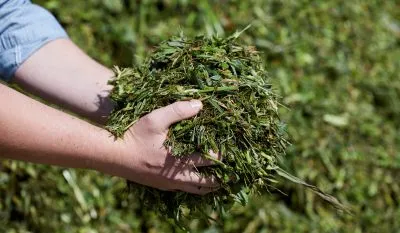There’s always something to learn from harvest season. Here’s our top takeaway from 2025.


The Four Stages Of Ensiling
We talk a lot about ensiling around here, and rightfully so. It’s one of the more vital parts of the farm, because the ensiling process directly impacts the health of your animals. Improper ensiling can mean that your cows don’t get the nutrients they need, which makes for unhappy cows and reduced production.

The Straight Facts on Fertilizer Basics
Since the season is just about upon us, it’s time to talk fertilizer. Most farmers know the basics, but a refresher never hurts. Dig into these fertilizer basics.

Overcoming Challenges for Grass and Legume Silage
There are many potential reasons why grass silage may end up with an undesirable fermentation. Below is a list of common issues that arise during the process of making grass and legume silage and potential causes and solutions.

NAFB: Silage Expertise On The Airwaves
We say we’re the silage experts. But we wouldn’t dream of keeping that expertise to ourselves. That’s why we recently partnered with the National Association of Farm Broadcasters (NAFB). Here are tips on choosing an effective silage inoculant.

Winterize Your Equipment
The winter is coming and it is time to think about winterizing your equipment. It will increase the service life and operational reliability of the machines during the next season.

Cover Crops after Corn Silage
What will happen to your field after corn silage? This questions gets answered in the following article about using cover crops after corn silage.

Planning Your Pile
There’s no time like the end of harvest to remind us all that a farmer’s work is never done. Even as we’re enjoying the fruits of our year’s labor, there is planning to be done. Specifically, pile planning. Get some extra informative advices here.

Impact of the droughts across the US
The current droughts across the United States have a huge impact on the agriculture. Many areas of the United States continue to fight drought conditions. Moreover, they have an effect on forage availability and quality. Read about managing your silage under such difficult conditions.

Tips for optimal face management
Read about which parameters are relevant for managing a silage pile from harvest to feed out and the specifics on proper face management.

Checklist: Corn Harvest Preparations
Before corn silage harvest starts, what can we do ahead of time to prepare? Get some tips in the following article.
Schedule an expert consultation
